Flame-retardant, chemical-resistant leakage sensors
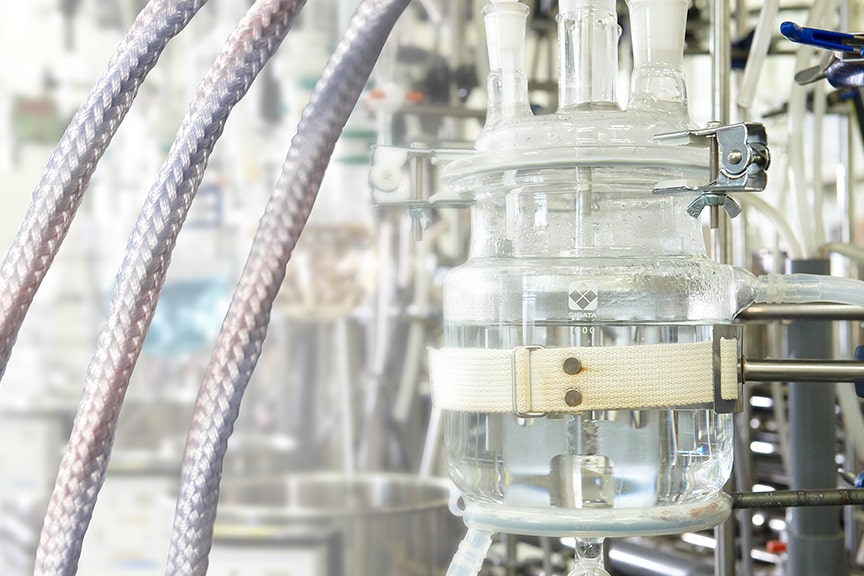
Quick detection of even slight liquid leakage
The liquid leakage sensor quickly detects and reports leaks from semiconductor factories, chemical storage facilities, chemical tanks, etc.
In recent years, digitization is rapidly progressing in hospital facilities, IoT devices, etc. and TATSUTA’s liquid leakage sensors are increasingly adopted in built-in water-cooling systems to dissipate heat from server equipment. In the meantime, several car manufacturers are also positively studying to incorporate the sensors into a water-cooled battery pack to dissipate heat from the batteries of EVs, of which use is expanding under growing concerns about the global environment.
We are adding flame-retardant, high-value-added products to our lineup to meet further customer needs.
Features
- Addition of chemical-resistant leakage sensor, AD-FH-S The sensor uses chemical-resistant materials and can be used repeatedly. However, adhesion of corrosive chemicals may prohibit reuse.
- Addition of flame-retardant leakage sensor, AD-BRS, AD-BFS, AD-BRL, and AD-BFL These sensors comply with flame-retardant standard NFPA262 (formerly UL910). NFPA: National Fire Protection Association
- Monitoring a wide area with a single sensor (up to 100 meters) Unlike spot-type sensors, these sensors are connectable up to 100 meters, monitoring leakage from the piping of chemical solutions in the entire factory.
- Quick detection of highly resistant liquids The sensor detects conductive liquid. The use of a highly sensitive detector reliably detects even high-resistance liquids. Depending on the conductivity, however, some liquids may not be detected.
Product details
Sensors
-
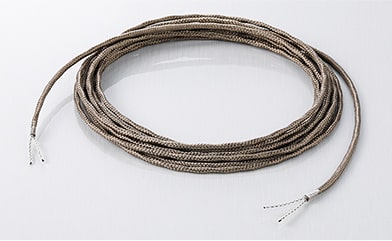 AD-BRS
AD-BRSThis flame-retardant sensor complies with flame-retardant standard NFPA262 (formerly UL910) and has excellent chemical resistance.
-
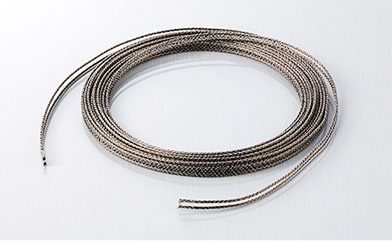 AD-BFS
AD-BFSThis flame-retardant flat sensor complies with flame-retardant standard NFPA262 (formerly UL910) and has excellent chemical resistance.
-
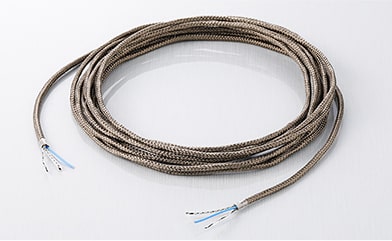 AD-BRL
AD-BRLThis flame-retardant, location-detection dedicated sensor complies with flame-retardant standard NFPA262 (formerly UL910) and has excellent chemical resistance.
-
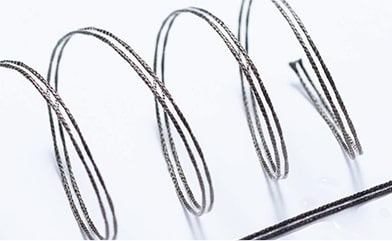 AD-BFL
AD-BFLThis flame-retardant, location-detection dedicated flat sensor complies with flame-retardant standard NFPA262 (formerly UL910) and has excellent chemical resistance.
Detectable chemical solutions
According to ASTM D543 (durability test against acid, alkali, and organic solvent), we put the sensor into the following chemical solutions, exposed at 25°C for seven days, thoroughly washed and dried, and then visually inspected and conducted indirect dripping test with water (100 µS/cm).
| Chemical solution | Concentration | Sensor | |||
|---|---|---|---|---|---|
| AD-BRS | AD-BFS | AD-BRL | AD-BFL | ||
| Hydrochloric acid (HCl) | 35-37% | ○ | △ | ○ | △ |
| Sulfuric acid (H2SO4) | 98% | × | △ | × | △ |
| Nitric acid (HNO3) | 60% | × | ○ | × | ○ |
| Phosphoric acid (H3PO4) | 85% or more | △ | ○ | ○ | ○ |
| Acetic acid (C2H4O2) | 99% or more | × | ○ | ○ | ○ |
| Ferric chloride solution (FeCl3) | 30-40% | ○ | ○ | ○ | ○ |
| Hydrogen peroxide (H2O2) | 30% | ○ | ○ | ○ | ○ |
| Phenol solution (C6H5OH) | 5% | ○ | ○ | ○ | ○ |
| Caustic soda solution (NaOH) | 10% | ○ | △ | ○ | △ |
| Ammonia (NH3) | 25% | ○ | ○ | ○ | ○ |
| Ethanol (C2H6O) | 99% | △ | ○ | △ | ○ |
| Methanol (CH4O) | 99% | △ | ○ | △ | ○ |
| Butanol (C4H10O) | 99% | △ | ○ | △ | ○ |
| Acetone (C3H6O) | 99.7% or more | × | ○ | △ | ○ |
| Hexane (C6H14) | 95% | ○ | ○ | ○ | ○ |
| Cyclohexane (C6H12) | 99.5% or more | ○ | ○ | ○ | ○ |
| Xylene (C8H10) | 80% or more | △ | ○ | △ | ○ |
| Benzene (C6H6) | 99.5% or more | × | ○ | × | ○ |
| Trichloroethylene (C2HCl3) | 98% or more | × | ○ | × | ○ |
| Toluene (C7H8) | 100% | × | ○ | × | ○ |
〇: Continuously reusable; △: Reduced detection sensitivity or change in appearance; ×: Non-reusable.
The chemical resistance is guaranteed for 〇 and △ marked in overall evaluation.
- For inquiries about products
